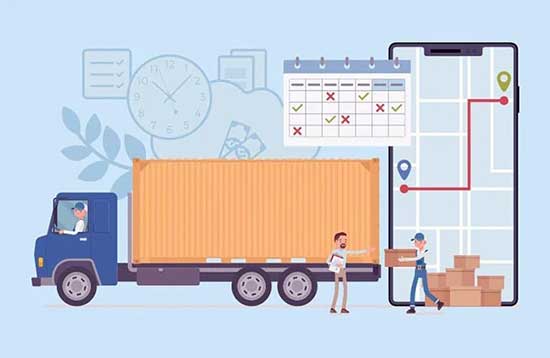

The tremendous pace at which the Warehousing industry grew last year was mind-boggling. At one point in 2021, the vacancy rate at warehouses in the US was at a staggering 5%! The need to pivot to a new warehouse management system that supports peak workloads and satisfies SLAs was a priority for many 3PL players, who suddenly were caught napping with old legacy systems. Though necessary, moving from an old legacy system to modern warehouse management software requires much introspection. What will be the top 3 aspects that any LSP needs to look at before embarking on a journey to select a new Warehouse Management System?
- Internal Introspection
- Solution Scouting
- Implementation Methodology
Internal Introspection
Let’s accept that the whole technology scenario around warehouse management systems has undergone a massive overhaul in the past few years. From new age start-ups to Enterprise software organizations, numerous solutions have extensive features and benefits and varying price points. Hence before embarking on a journey to scout for a new warehouse management systems, a Logistics Service Providers (LSP) should look inward and understand what they need to achieve. Some key questions to consider are.
- The current business scenario and vision of the Logistics Organization. How can the new technology help achieve short- and long-term goals?
- What are the challenges that are faced in their current system? And how the new warehouse management software would help them overcome?
- Not all WMS solutions support every kind of industry. Consider the enrolled customers and prospects.
- How is the current process in the Warehouse mapped, and how can new technology hamper or improvise it?
- Integration with other IT systems in the organization includes procurement, finance, payroll… etc.
- Integration with external agencies, including, Carriers, TMS solutions, Shopping carts, OMS, and Asset Management solutions.
- The budgets and timeline to implement. Measuring the ROI from this implementation.
- How can the warehouse management software solve my current problems and also future proof my business?
Once an LSP can think along these lines, it will lead to a meaningful questionnaire that can be used to build up an RFI/RFP.
Solution Scouting
Getting the requirements correct is just one-third of the job; next will be an extensive search for the right solution. With many warehouse management software solutions in the market, LSPs need to ask the right questions and set up the right team to scout the solution. Some key aspects to consider during this phase includes
- Setting up a dedicated team with a mix of people from IT, Operations, Finance, Procurement, and executive leadership to firm up requirements and list down prospective solutions.
- Prepare and finalize the RFP document to invite proposals. If the organization does not have in-house abilities to develop a comprehensive RFP, it is best to involve independent supply chain consulting firms who can help LSPs arrive at a requirement document.
- Some organizations organize a vendor conference where they invite multiple vendors and present their vision.
- Shortlist a finite set of solutions (not more than 3) and do a deep dive.
- Instead of looking at the standard demo provided by the vendor, document the daily operations as scenarios and share it with the solution vendors to provide a customized demo. This will help us narrow down the solution that fits the existing process across the organization.
- Look out for references from the existing customers. Finalize the scope, the statement of work, and award the contract.
Implementation Methodology
Once the solution provider is confirmed, the idea will be to have a transparent implementation methodology that can execute these entire plans to a successful end. A few key aspects to consider during this phase includes:
- Form a team at LSP and solution provider end who can drive this implementation—setting up an executive leadership committee to steer through roadblocks that arise.
- Set clear milestones and metrics through which the entire implementation process is measured.
- Most implementations go through a step-by-step roll-out process where one of the warehouse locations is taken up as a pilot project. Once this pilot project succeeds, the roll-out is implemented for other locations.
- Collecting and configuring all the master data is essential to warehouse management system implementation. The teams should ensure that every possible master data is collected and configured.
- A thorough testing strategy should ensure that every scenario and workflow is tested for functionality, integrations, and performance.
Implementing a warehouse management software will not only impact operational aspects of the Warehouse but also provide a competitive edge in winning new deals. Hence, a warehouse management system implementation must have a calculated approach that empowers the logistics service providers to offer cutting-edge solutions to their end customers.
Frequently Asked Questions (FAQs)
Enterprise asset management (EAM) involves the management of mission critical assets of an organization throughout each asset's lifecycle. EAM is used to plan, optimize, execute, and track the needed maintenance activities with the associated priorities, skills, materials, tools, and information. The aim is to optimize the quality and utilization of assets throughout their lifecycle, increase productive uptime and reduce operational costs.
Enterprise asset management (EAM) involves the management of the maintenance of physical assets of an organization throughout each asset's lifecycle. EAM is used to plan, optimize, execute, and track the needed maintenance activities with the associated priorities, skills, materials, tools, and information.
The software helps in effective maintenance of assets through preventive, predictive, shutdown and breakdown maintenance strategies. The system also helps enterprises mitigate equipment risks by enhanced safety standards. The streamlined operations and improved asset performance helps organizations increase their investment effectiveness.
EAM is important because it helps organizations track, assess, manage and optimize asset quality and reliability. Asset intensive Organizations have hundreds, thousands, even millions of assets which needs to be maintained to maximize / optimize life of these assets to increase the return on investment.
The key features of effective EAM are:
- Work management.
- Maintenance Strategies (Preventive/ Predictive / Breakdown / Shutdown).
- Planning and scheduling.
- Supply chain management.
- Health and safety.
- Mobility.
- Analytics.
- Improved Asset Health at reduced cost through data driven maintenance Programs
- Complete visibilityon entire maintenance data across Equipment, across Models, across Branches to aid in analysis & decision making such as to Repair or Replace the Equipment
- Insightful analysis of Inspection Data to improve customer satisfaction
- Effective maintenance management enhanced by predictive maintenance and inbuilt analytics
- Increased reliability and safety, keeps complete track of all the inspections & calibration schedules
- Mobile Application enables users to execute work while “in the field” leading to minimized non-productive time and increased productivity and reduces duplication of work and human errors in recording information.
- Quick turnaround time through Actionable Notification & Alerts for every process in real time and accessible anytime and anywhere.
- Improved Regulatory Part of asset management involves the implementation of better O&M practices, which can significantly improve compliance.
Asset Intensive companies under the following Industries :
- Ports
- Cement and Mining
- Utilities
- Fleet Maintenance
- Equipment Rental
- Other Manufacturing
- Real Estate & Infrastructure
- Power Generation
Contact us for a meeting and schedule a demo
This differs on case to case basis, based on the type of installation and unique industry specific requirements. Contact us for a meeting and schedule a demo.
This differs on case to case basis, based on the type of installation and unique industry specific requirements. Contact us for a meeting and schedule a demo.
Stay Connected, follow us on LinkedIn / Twitter to know more about EAM Software latest trends.

Ragunathan leads Go-to-Market and Branding for Ramco Systems’ Logistics product, bringing extensive experience in digital marketing and product launches. He has a proven track record of driving impactful strategies that deeply connect with target audiences. Passionate about solving complex problems, delivering scalable systems, and enabling organizational growth through innovation, he excels at collaborating with cross-functional teams. Ragunathan values continuous learning and is committed to building practical solutions that deliver real value.


